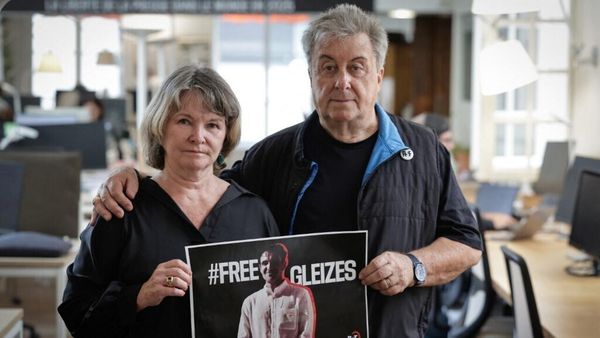
It was just a couple of weeks ago that HBO released the documentary “Mind Over Murder,” which told the story of six people who confessed to a killing they didn’t commit, and I told you it was maybe the most mind-blowing of all the true-crime series and films we’ve seen in the last few years.
Now comes another contender for that distinction. The Netflix documentary “Girl in the Picture” is an astonishing, horrific, fascinating and complex true-crime story that starts with a brutal act of murder in the late 20th century and winds its way well into the 2000s and 2010s. It’s arguably the most labyrinthian real-life crime story you’ll ever hear, and at times I felt a sense of perception whiplash just trying to keep up with all the stunning twists and turns, but thanks to the skilled work by acclaimed director Skye Borgman (“Abducted in Plain Sight”), the precise editing that shifts from time period to time period not as a gimmick but with purpose, and new interviews shedding light on various aspects of the case, we keep up with the story. Just be prepared to hear about an absolute monster of a human being who destroyed lives — as well as a number of brave and dedicated people who finally brought him to justice.
Relying on archival footage, the judicious use of re-creations and the usual documentary arsenal of interviews with investigators, family, friends and journalists, “Girl in the Picture” begins in Oklahoma City in 1990, when some men in a truck see something on the side of the road and call an ambulance. It’s eventually learned this is a 20-year-old woman named Tonya Hughes, who was working as a stripper in Tulsa, and while she’s still alive when transported to the hospital, she soon passes away, apparently the victim of a hit and run.
Tonya’s friends find a name and call a woman they believe to be Tonya’s mother to tell her what happened. The woman says this can’t be right, as her daughter died some 20 years ago, when she was only 18 months old.
This young woman was using the name Tonya Hughes, but she was not Tonya Hughes. So, who was she? Who is the girl in this picture?
Flashback to Forest Park, Georgia, in the mid-1980s, when the woman who eventually called herself Tonya Hughes was a teenager known as Sharon Marshall— an upbeat, friendly, brilliant, beautiful girl who had received a full scholarship to Georgia Tech to study to become an aerospace engineer. Former classmates talk about how Sharon was a shining light but lived under the strict rule of her single father, one Warren Marshall. Before Sharon could go to college, she got pregnant — and then she and her father disappeared. By the time they arrived in Oklahoma a few years later, Sharon was now Tonya and had a young son named Michael, and Warren Marshall had changed his name to Clarence Hughes and was legally married to Tonya.

The story gets even more bizarre. After Tonya’s death, Clarence storms into Michael’s school, kidnaps the principal and Michael, duct tapes the principal to a tree and goes on the run with the young boy. The story is featured on multiple episodes of “America’s Most Wanted” and the FBI gets involved in the investigation, but it’s years before various pieces of the puzzle are put together and it’s learned that Clarence Hughes’ real name is Franklin Floyd, that he had a long history of violent sexual crimes, and that Tonya/Sharon is actually someone else altogether and had been raised by Floyd as his daughter, only for him to abuse her, force her to work in strip clubs and even marry him. Her real name was Suzanne Marie Sevakis.
“I don’t know anyone who had as miserable a life as she had, for as long as she had it,” says retired FBI Special Agent Joe Fitzpatrick, who spent years trying to get to the bottom of the case. “I hated the fact that as a child, she was sexually abused, and then he took her around to strip clubs to perform and make a living for him. … I hurt a lot for her.”
True-crime documentaries such as this often feature interviews with former investigators such as Joe Fitzpatrick, the true heroes of these stories. Men and women who are retired, who sit down in a diner or in a stark studio, maybe a cup of coffee in their hands, as they talk about the case. We see photos of them when they were younger, framed badges, mementos of their careers. They always still look like law enforcement or military, even in their 70s or their 80s. We hear them talk with passion and intelligence and vast experience about a particular case, and we greatly admire them for their dedication and their concern for their victims. They’re the heroes of these stories.
In this case, kudos also go to the investigative journalist Matt Birkbeck, who wrote two books about this case and serves as executive producer on the film. Birkbeck was determined to uncover the identity of that young woman who was found on the side of the road in Oklahoma City in 1990, determined to see that surviving members of Suzanne’s family were there when the correct name was etched on a new tombstone.
As for Franklin Floyd: He’s been sentenced to death and rots in the Union Correctional Institution in Florida. He’ll never take a breath of free air again.







